
Robert Benoist’s Delage 2LCV passes the Dunlop Bridge during his run to third place, Grand Prix D’Europe, Lyon, France on August 3, 1924…
100,000 people watched the 500 mile race, 35 laps of the 14.4 mile road course took winner Giuseppe Campari seven hours, five minutes and 34 seconds to complete in his supercharged 2-litre Alfa Romeo P2 straight-eight. Albert Divo and Benoist were second and third in normally aspirated Delage 2LCV V12s.
The 2-litre Grand Prix formula utilised between 1922 and 1925 was a noteworthy period of innovation. Its key elements included engines of no more than 2-litres, a minimum weight of 650kg, a minimum body width of 80cm and obligatory riding mechanics.
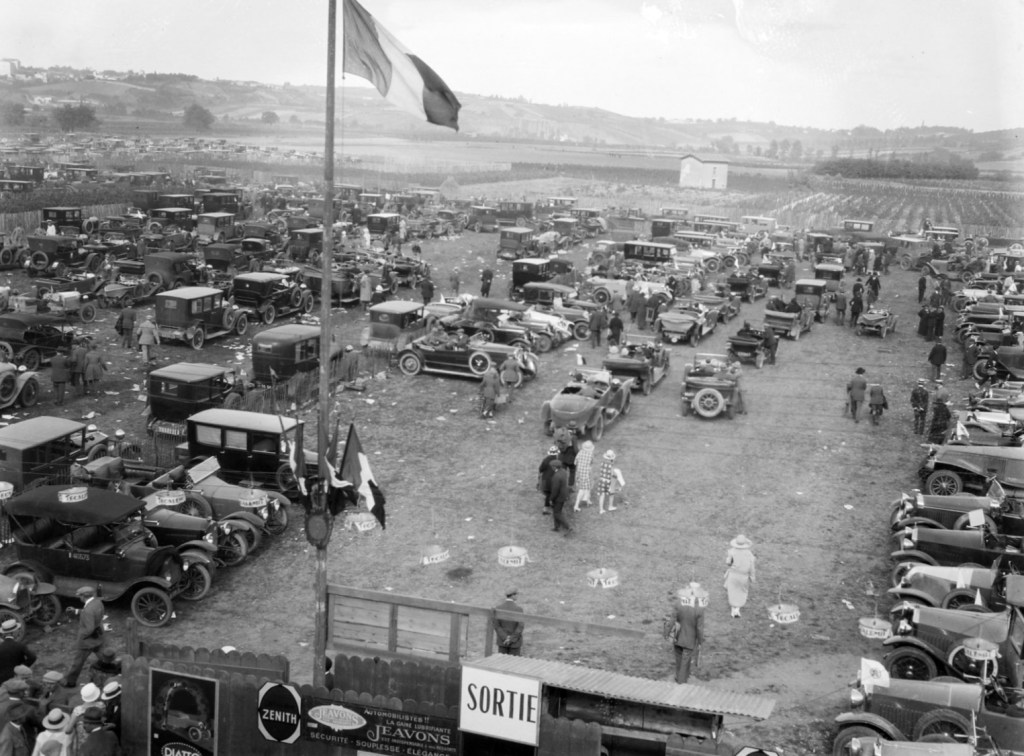
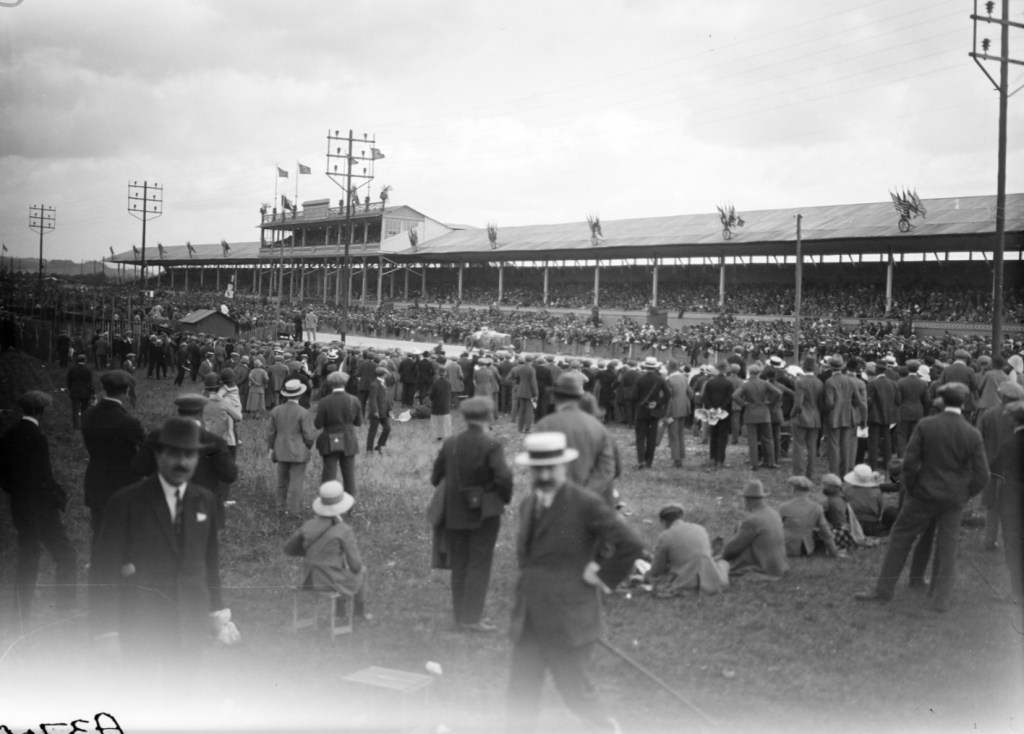
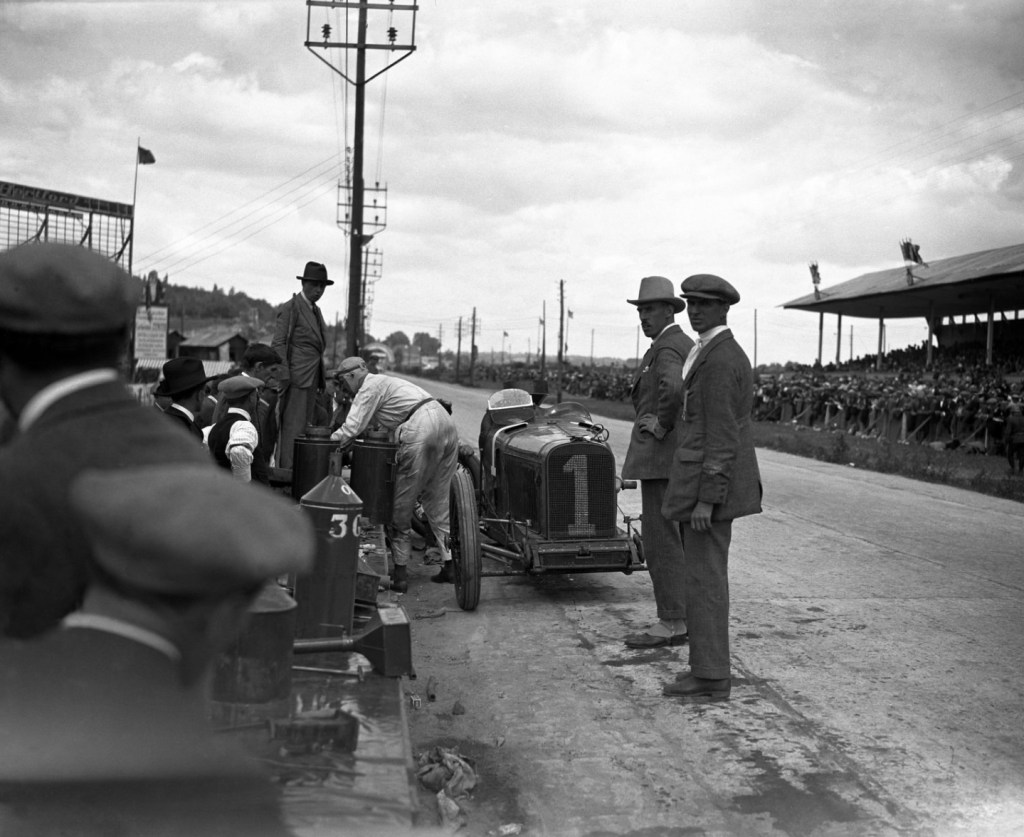
The European GP meeting was a major carnival which included races for motorcycles, bikes, cyclecars and touring cars in its program.
Twenty cars took the rolling start of the race, gridded two-by-two in race number order, at 9am on the Sunday. Two motorcycles led the way, then turned off the course as the cars took the flag lowered from the timekeepers grandstand.
At the end of the first lap Henry Segrave’s Sunbeam straight-six s/c, led by four seconds from Antonio Ascari’s Alfa, Kenelm Lee Guiness’ Sunbeam, then Campari’s Alfa, Pietro Bordino’s Fiat 805 straight-eight s/c, Divo’s Delage, Louis Wagner’s Alfa and Chassagne’s Bugatti T35 straight-eight – on the debut of a car destined to become the greatest ever production GP car.
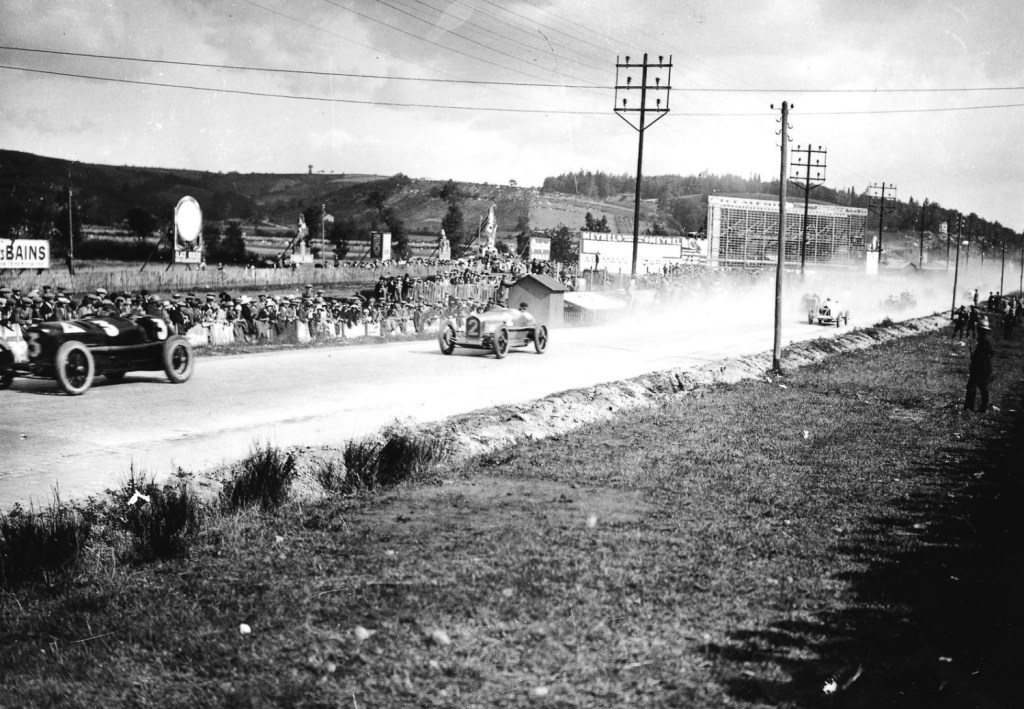
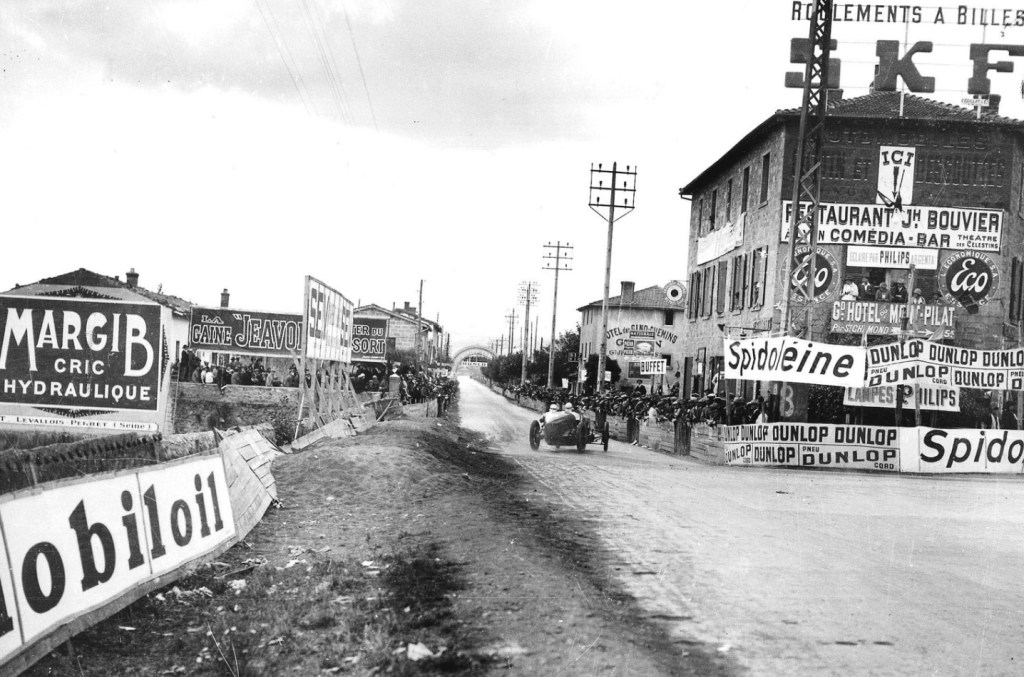

By the end of lap three Bordino led, a position he held on lap four before being passed by Ascari who then led Guinness, Bordino, Campari, Wagner, Dario Resta’s Sunbeam and Divo. Ascari’s average lap-time was 12m05sec.
After six laps, Bordino had retaken the lead in a high speed battle with Ascari – he held it for a further six laps. After 11 laps it was the two red cars then Guinness, Campari, Divo, Wagner, Resta, Costantini, Bugatti T35, Benoist, and Pastore, Fiat 805.
Ascari then led when Bordino pitted to work on his front brakes for over 30 minutes. Resta pitted, so too Count Louis Zborowski’s privately entered Miller 122 straight-eight, and three Bugattis – Ascari led from Guinness, Campari and Divo.
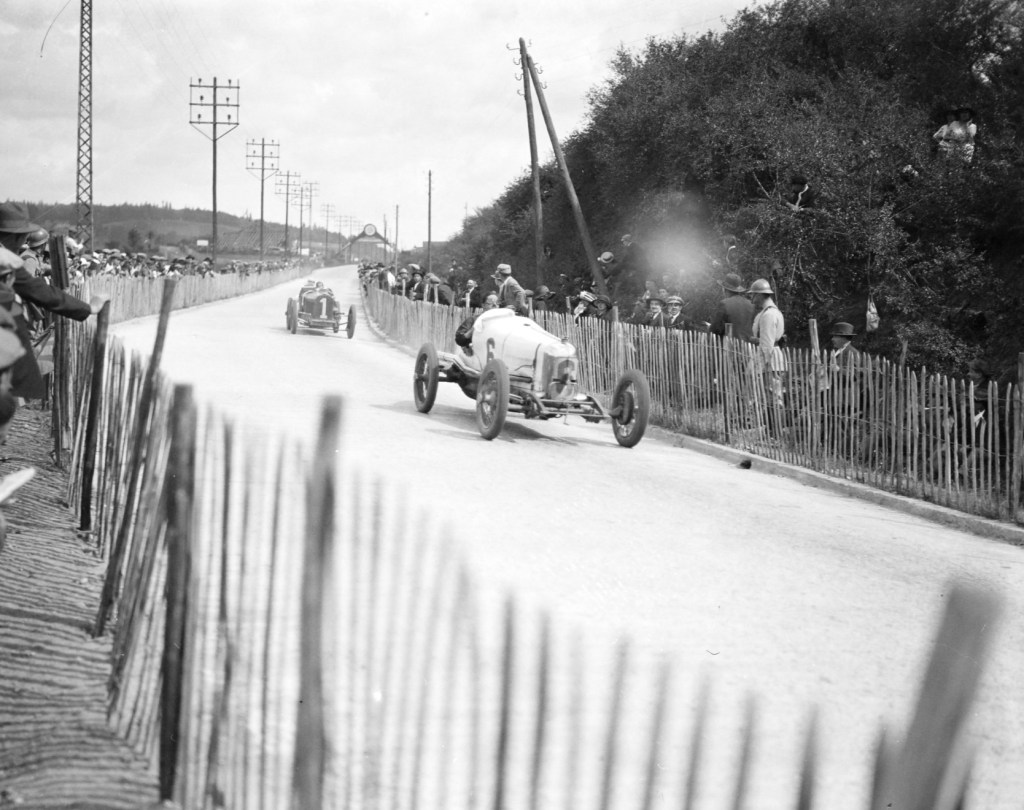

Guinness led after Ascari pitted for fuel and rear wheels on lap 17, while Zborowski retired when the Miller’s front axle worked loose from its chassis. Campari led at the end of the lap from Guinness, Divo, Ascari, Benoist and Wagner. Bordino retired. When Campari stopped for fuel on lap 19 Ascari led from Campari, Guinness and Divo, fourth.
Guinness retired with a Sunbeam gearbox hors ‘d combat on lap 21 – the order was then Ascari and Campari in Alfa Romeo P2s, Divo and Benoist, Delage, Wagner, Alfa and Segrave, Sunbeam until lap 25. The perils of riding mechanics were made clear when Segrave changed his on lap 22 after M Marocchi was badly hurt by a tread thrown up by another car, as did Divo on lap 24 after M Fretet was over-worked. Down in sixth place Segrave set a 11m19sec lap record – 122.71km/h. After 695km/30 laps, the remaining 11 car field comprised Ascari, Campari, Divo, Benoist, Wagner, Segrave, Rene Thomas’ Delage, Chassagne and Fridrich in Bugatti T35s, Resta, and Garnier in the fifth Bugatti T35 which took the start.
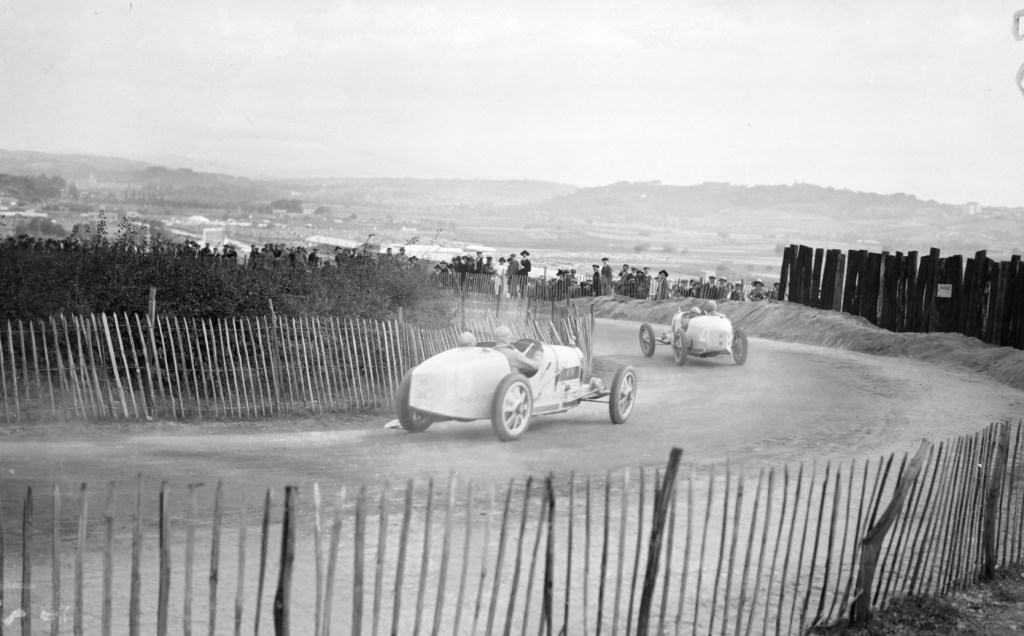
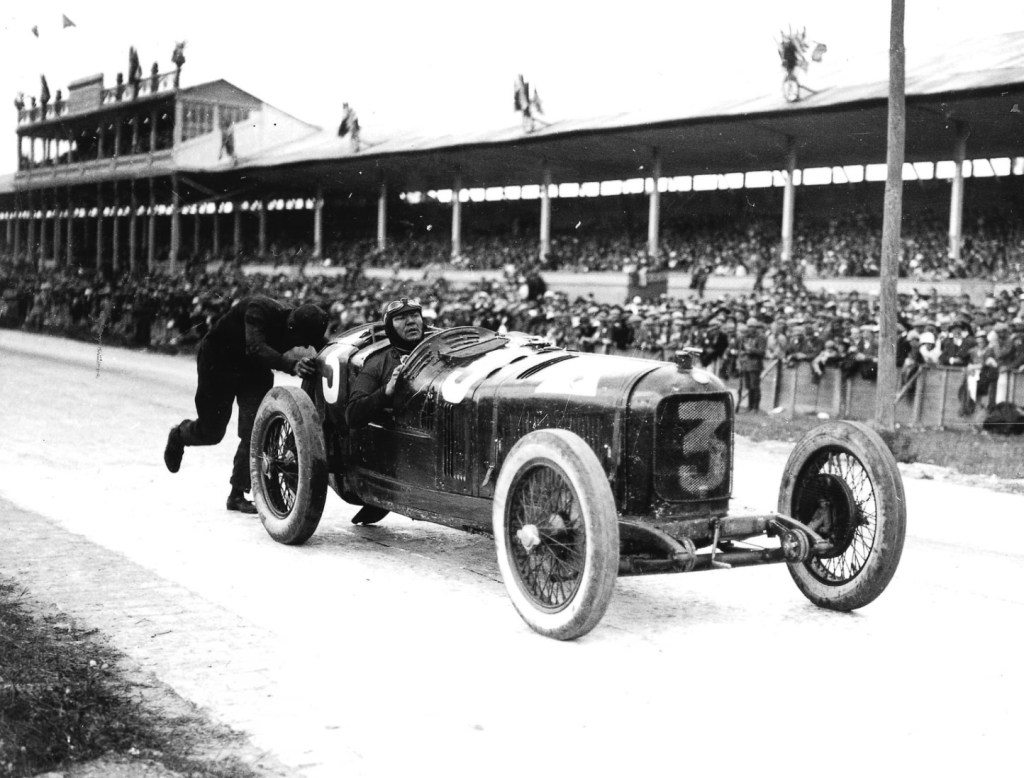
On lap 33 Ascari slowed with engine dramas, ceding the lead to Campari, then Divo also passed Antonio who pitted on lap 35. There, Ascari and Giulio Ramponi, his riding mechanic, changed plugs and added water, but the car refused to fire despite valiant attempts by the intrepid mechanic to push-start the ailing P2 slightly uphill.
The crowd cheered Giuseppe Campari home in 7hr 5min 34.6sec – Alfa Romeo had won an emphatic first international victory, the beautiful Alfa P2 was designed by recent Fiat escapee, Vittorio Jano. Then came Albert Divo just over a minute later, and Robert Benoist’s Delage 2LCVs, then Louis Wagner, P2, Henry Segrave’s Sunbeam and Rene Thomas’ 2LCV.


That year the other major race wins were shared. The Alfa Romeo P2 won the Circuito di Cremona and Italian GP with Antonio Ascari at the wheel, while Enzo Ferrari was victorious in Pescara’s Coppa Acerbo aboard an RLTF24 3.6-litre straight six.
Christian Werner won Targa on a Mercedes TF24 2-litre four, Giuseppe Morandi, the Circuito del Mugello in an OM 665S 2-litre six, and Henry Segrave the GP de San Sebastian aboard a Sunbeam GP. Finally, Guido Meregalli won the Circuito del Garda in a Diatto 20S 2-litre four in November.
Etcetera…
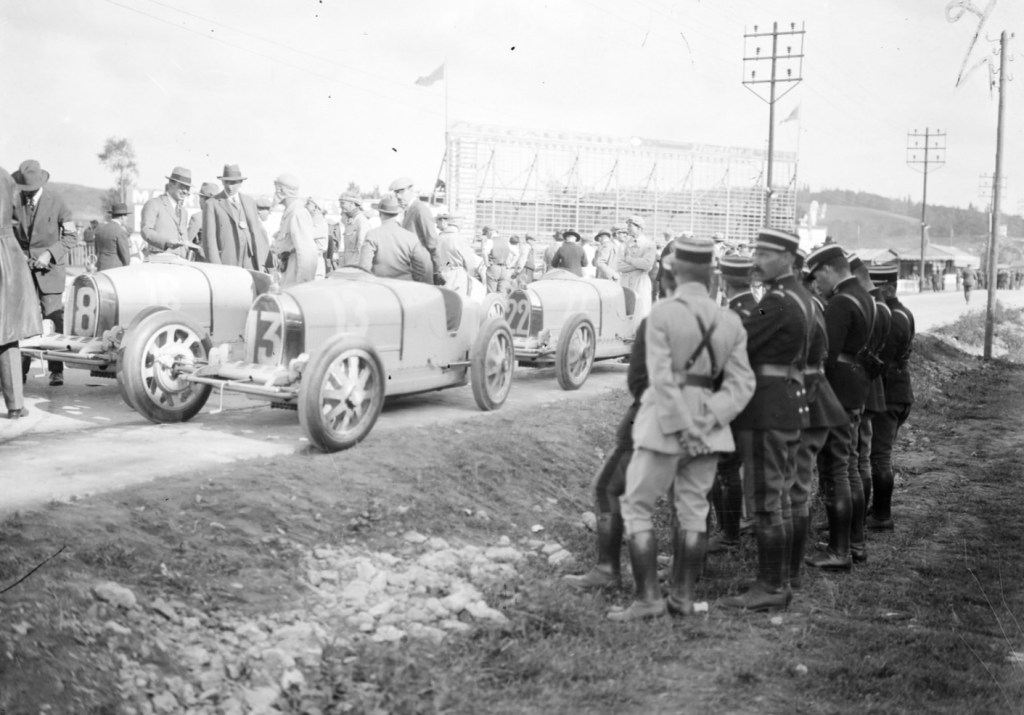
The French wallopers keep an eye on Ettore Bugatti’s flotilla of 2-litre unsupercharged, SOHC, two-valve 90bhp straight-eight Type 35s.
The best placed of the five cars entered were Chassagne, seventh, and Fridrich, eighth – with plenty more to come globally over the following decade. #18 is the Pierre de Vizcaya car, #13 Ernst Fridrich and #22 Meo Costantini.
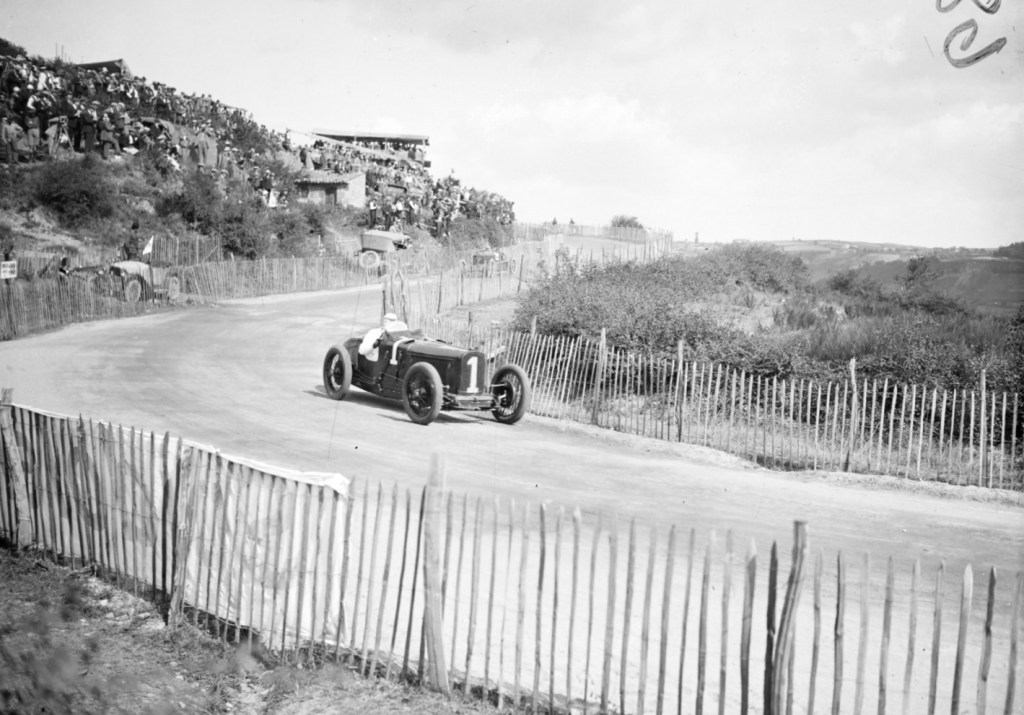
Henry Segrave through a quick right-hander, and Dario Resta in the paddock below.
The 1924 GP Sunbeam had a 4inch longer, and 2 1/2 inch lower chassis than the ’23 model. Its six-cylinder DOHC, two-valve 1988cc Roots supercharged engine gave 138bhp @ 5500 rpm, compared with its normally aspirated sibling’s 106bhp in 1923.
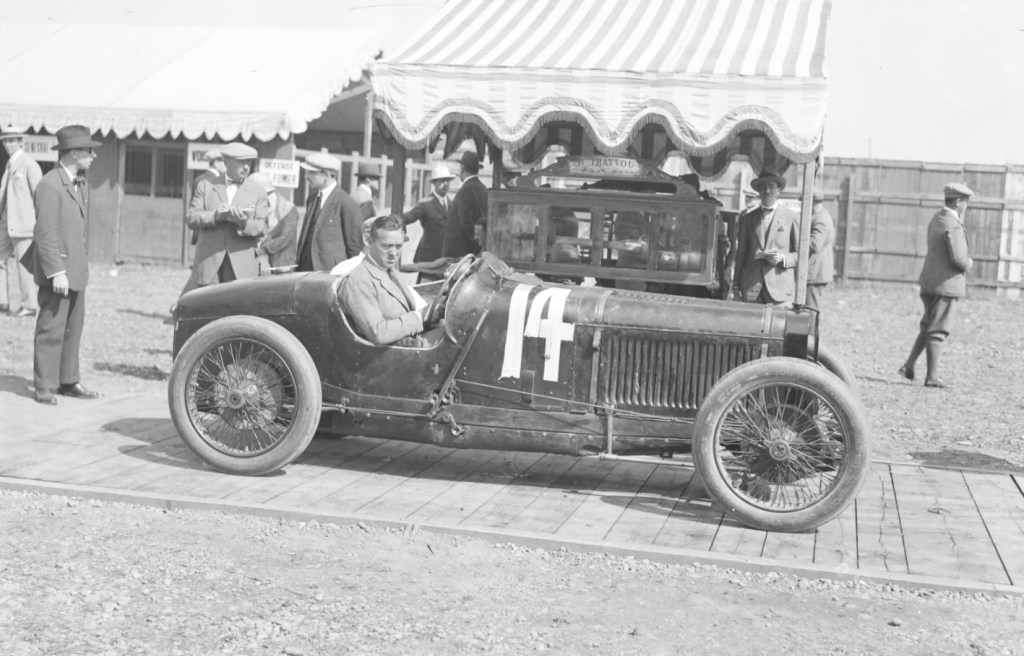
After the Great War, the race organisers, l’Automobile-Club de France turned the oldest GP into an invitational race, Germans and Austrians were not invited that year.
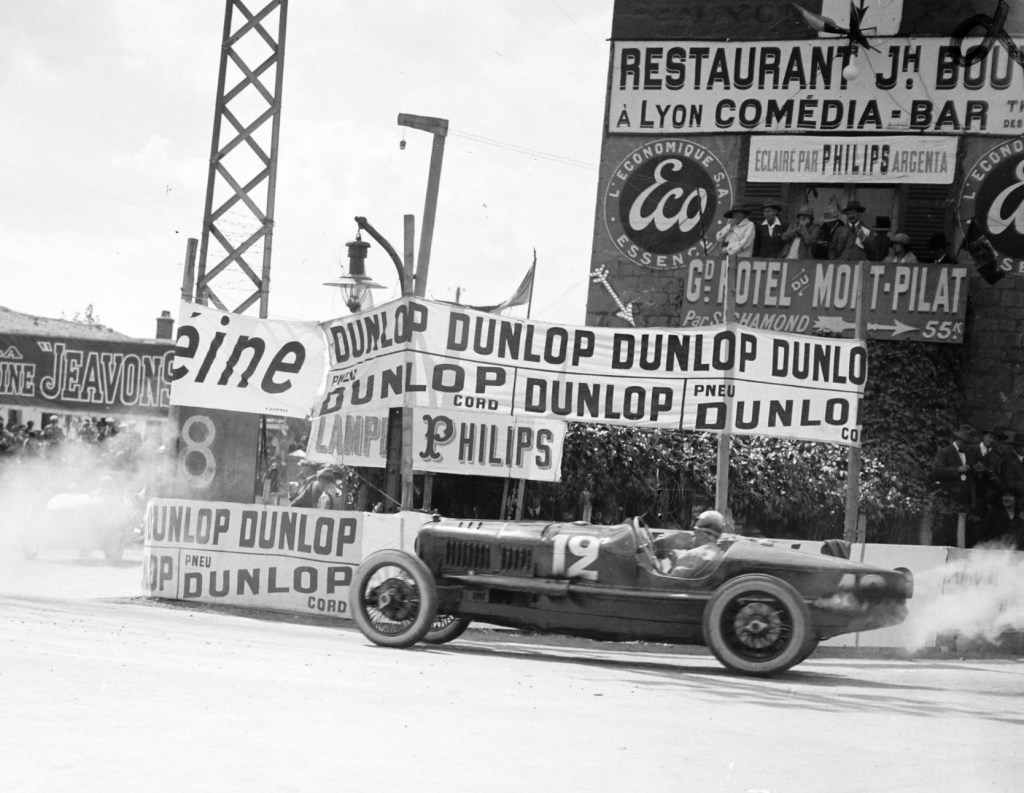
While none of the Fiat 805s finished the race, these epochal designs cast a long shadow. They were the first to win a Grand Prix using a 146bhp @ 5500rpm supercharged engine when Carlo Salamano triumphed in the 1923 European GP at Monza. The bulk of the grid followed their lead in 1924 – the dominant template of race winning GP cars was set until 1951; front-engined machines powered by supercharged, straight-eight, DOHC, two-valve engines, with all exceptions duly recognised!
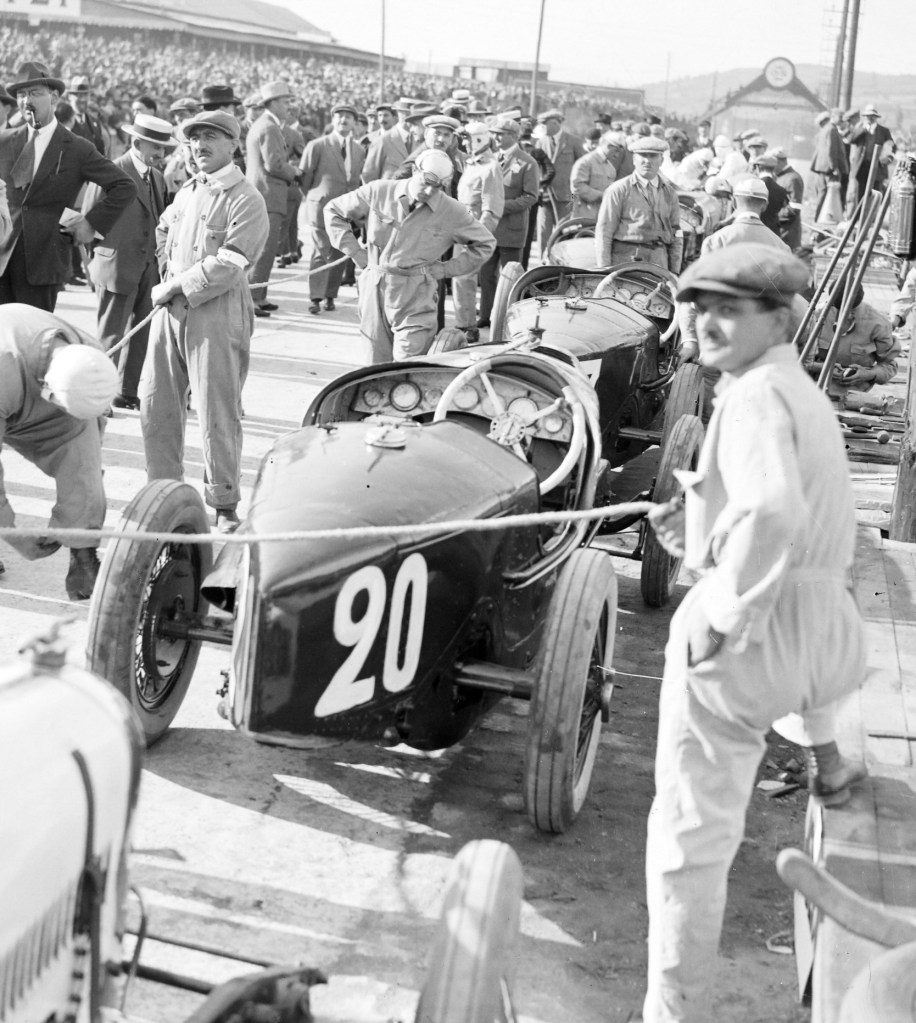
Credits…
GP Library, MotorSport Images, Hans Etzodt’s wonderful race report in kolumbus.fi
Tailpiece: The course…

The 37.63km Lyon-Givors circuit was used for the 1914 French GP but was shortened to 23.14km for 1924.
The start was about 14km south of Lyon on the RN86. From there the course headed south on short straights passing the outskirts of Givors, where the road turned right, south-west, twisting along the River Gier valley before a right-turn then uphill to Pont Rompu.
The course then turned right again on a high-speed return straight heading north-east. At the end, after 6km, there was a sharp right turn leading to the famous Piege de la Mort, a difficult left turn and Les Esses, followed by a few twists before Le Sept Chemins a right hairpin shortly before the start-finish line, grandstand and pits.
Finito…

Mark,
Lyon, not Tours (1923).
B
Campari with giant Sausage Lyonnaise for winning.
Thanks for that one, Mark. A minor point, but DA8420 was the registration number of Segrave’s Sunbeam, not a type number.
Thanks Roger,
Have another look for me, I’ve been playing with the piece for the last couple of hours! The type numbers of the GP Sunbeams have me tossed! Talk soon.
Mark
That Paddock Panorama photo is fabulous – lots of differing body styles!